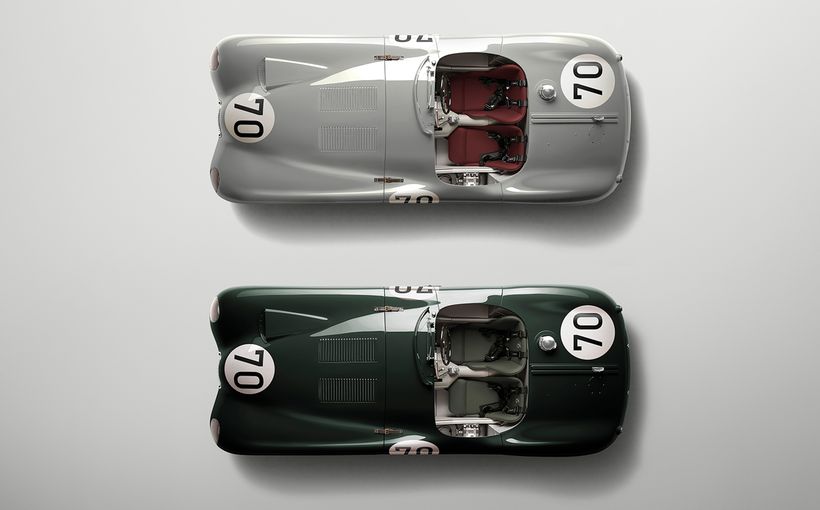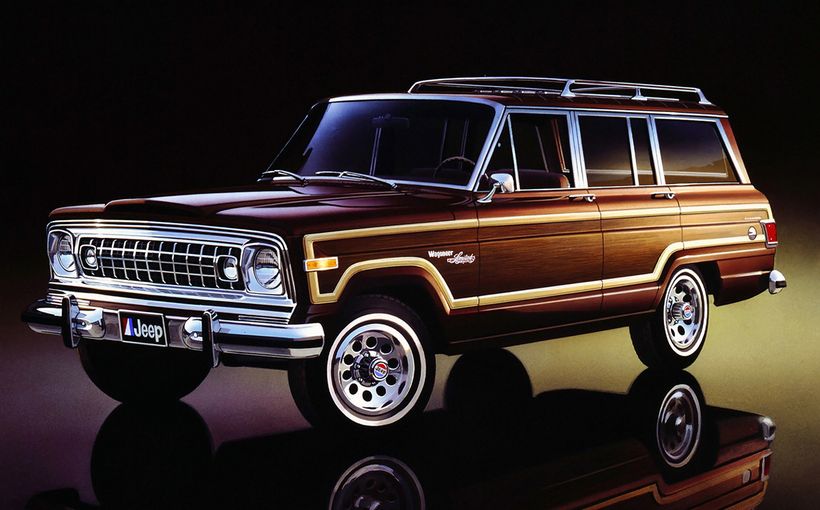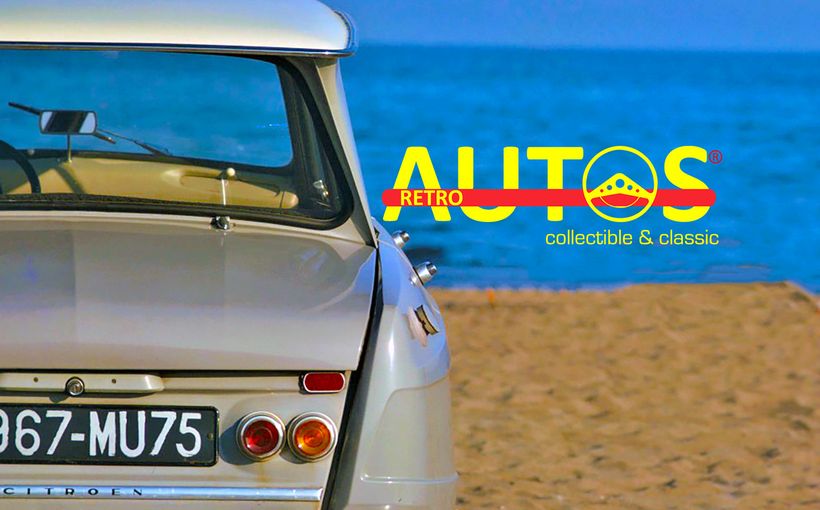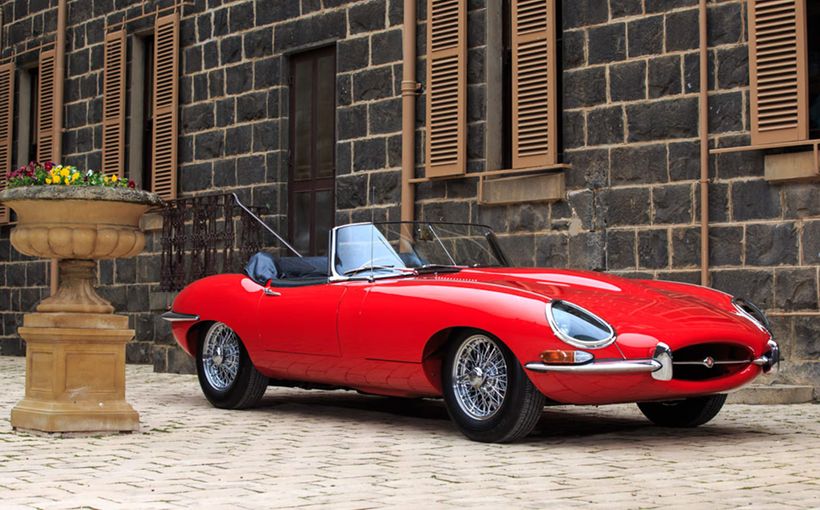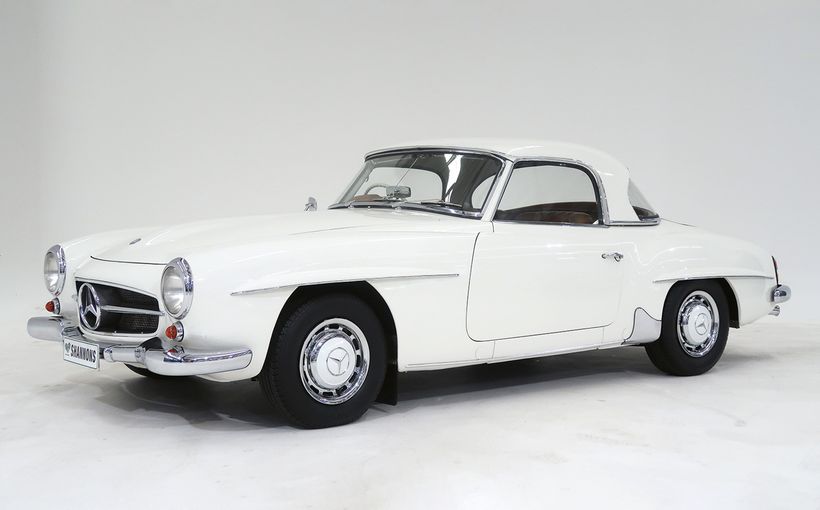Jaguar E Type: Bob Jane’s Ultra-Rare Factory Lightweight

Bob Jane - multiple Australian Touring Car Champion, Armstrong 500 winner and sports sedan ace - ranks as one of the greats of Aussie tin-tops. Perhaps less known is that he was also a major drawcard in production sports car/GT racing in the 1960s, particularly when he fronted with an ultra-rare Jaguar E type factory lightweight.
Only 12 of these exotic competition roadsters were built by Jaguar, featuring extensive use of aluminium in chassis, body and engine components that resulted in a sizeable and crucial drop in weight. The fact that one of these rare factory racers ended up in a then-global backwater like Australia showed how highly the UK factory valued Bob Jane’s involvement with the marque, based on his success in Australian touring car racing with his famous Mk 2.
The need for small volume production of a lightweight E type for competition use soon emerged after the original Series 1 was launched to global acclaim at Geneva in 1961. Available in a choice of coupe or roadster body styles, it had the go to match the show with a rigid steel monocoque, independent suspension, four-wheel disc brakes, rack and pinion steering and a triple-carbed 265bhp version of the classic 3.8 litre DOHC inline six capable of an astonishing top speed of 150mph (240km/h). Needless to say, the bargain-priced E type was a global sensation and an instant classic (4.2 litre, 2+2 and V12 variants followed before production ended in 1974).

Given its instant supercar status it was no surprise to see the new E type competing on UK tracks in production sports car racing in 1961. In preparation for this campaign, Jaguar had started delivering competition-prepared E types to selected customers prior to its public unveiling in March. These cars were equipped with uprated engines, heavy duty clutches, close-ratio four-speed gearboxes and stiffer suspensions.
Top drivers including F1 ace Graham Hill achieved promising results against Ferrari’s 250 GTs but the arrival of the legendary 250 GTO in early 1962 changed the game for Jaguar. This stunning Italian thoroughbred, which claimed three international GT class titles from 1962 to 1964, combined a powerful 3.0 litre V12 in a slipstreamed body with a feather-like racing weight of just under 900kg.
By comparison the E type roadster (1256kg) and fastback coupe (1315kg) were seriously overweight. However, in fairness, they were effectively road cars trying to compete with a purpose-built competition car that could also be driven on the road. The objective was clear; to be competitive against the 250 GTO the E type had to lose weight – and lots of it.

After promising early experiments with a monocoque made from thinner-gauge steel, Jaguar committed to building a batch of 18 lightweight E type roadsters (but only 12 were built) with production commencing in late 1962. These highly specialised cars would only be made available to favoured clients, which validated Bob Jane’s special status with the UK factory in Coventry.
The specification sheet for the E type lightweight sparkled with exotic aluminium components, including the central monocoque, competition seat frames, bonnet, doors, boot-lid, bolt-on roadster hardtop roof and slotted 6 x 15-inch Dunlop aluminium disc wheels similar to those seen on the Le Mans-winning D types.
To save more weight the side windows were made from clear polycarbonate, held in place purely by friction in channel slides that allowed them to be raised and lowered by handles screwed directly through the top of each screen.

The bolt-on hardtop was specified to produce more slippery aerodynamics than an open roadster, as the factory was aiming for Ferrari-smashing top speeds exceeding 160mph (256km/h). To keep the drivers well ventilated inside this cockpit, a scoop under the bonnet funnelled cool air through a large air duct in the firewall which then flowed out through an extractor vent in the roof.
The steering rack was lowered to reduce bump steer and the suspension heavily revised for racing, including a wider track and anti-dive geometry in the front and a wider rear track. Spring, damper and anti-roll bar settings were much stiffer than standard along with more rigid suspension mountings.
The pedal gear was also lightened and braking optimised with four big 11.75-inch ventilated disc rotors controlled by two aluminium master cylinders for the front and rear hydraulic circuits. The inboard-mounted rears were cooled by scoops that funnelled fresh air through the ventilated rotors and out through vents in the boot-lid.

The 3.8 litre DOHC inline six consisted of a cast-aluminium alloy cylinder block mated to the D type’s 35/40-degree wide-angle aluminium cylinder head, with Lucas mechanical fuel injection and dry-sump lubrication. This engine also featured a special crankshaft harmonic balancer, lightened flywheel and cast aluminium sump, oil pump and water pump housings.
Also specified by the factory was an aluminium-cased ZF five-speed gearbox to replace the E type’s standard four-speed plus a Thornton Tork-Lok differential for maximum traction.
Power output for this exotic engine was claimed to be as high as 340bhp in some examples. The drastic weight-loss program reportedly trimmed about 280kg from a standard roadster, resulting in a racing weight of less than 1000kg. This gave the E type lightweight a power-to-weight ratio that was much closer to that of its Ferrari nemesis and therefore a fighting chance.

Two of the lightweights were completed in time for US-based owners Briggs Cunningham and Kjell Qvale to enter one car each in the Sebring 12 Hour at Florida in March 1963. The new Jaguars enjoyed a reliable run with Ed Leslie/Frank Morrill finishing seventh outright and first in class (over 3.0 litre GT) for Qvale, with Bruce McLaren/Walt Hansgen one place behind in eighth and second in class.
However, the two new British cars finished behind three Ferrari 250 GTOs which claimed fourth, fifth and sixth places outright plus the top three spots in their class (under 3.0 litre GT).
After finishing fourth at Le Mans in 1962 in a D type-engined steel-bodied E type with Roy Salvadori, Briggs Cunningham returned in 1963 with a three-car team of genuine factory lightweights but they did not produce the desired results.
Each car struck mechanical trouble with two retiring early and the third finishing ninth outright and second in class (over 3.0 litre GT). The Ferrari 250 GTOs again proved superior finishing second, fourth and sixth outright plus filling the top three places in their class (under 3.0 litre GT). However, the E type lightweights did enjoy numerous victories and top-three results in shorter distance UK events that year.

The first of three lightweights fitted with low-drag bodywork was produced in-house by the factory, based on a thin-gauge steel monocoque car which enjoyed considerable success in the hands of RAF pilot Dick Protheroe.
One of the 12 aluminium lightweights, raced by Germans Peter Lindner and Peter Knocker, featured a revised low-drag body configuration and a well-developed engine claimed to produce more than 340bhp. It was arguably the fastest of the racing lightweights but Lindner was tragically killed and the car almost destroyed in a racing accident in 1964. Another lightweight shared by Peter Lumsden and Peter Sergeant featured yet another interpretation of the low-drag theme with an elegantly extended nose.
These modified lightweight E types and others competed in numerous races in the UK and Europe and although fast were often haunted by technical gremlins, in particular the ZF gearboxes and aluminium engine blocks. These issues were largely blamed on the factory’s declining interest in direct involvement in racing which was all but over by the end of the 1964 European season, leaving the lightweights short on development.

Bob Jane’s E type Factory Lightweight
E type chassis number S850667 was number 10 of the 12 lightweights originally built by Jaguar and ordered by Jane through Australian importer Bryson Industries. It was shipped from the UK on October 20, 1963 arriving at the Melbourne docks in early November.
It was fitted with a standard close-ratio E-type four-speed gearbox, as Jaguar claimed the alloy-cased ZF five-speeder had not been sufficiently tested at the time of delivery. It also had a relatively tall 3.54:1 diff ratio tailored for long, fast European circuits. As part of the car’s spare parts inventory, Jane threw in a shorter 4.09:1 crown wheel and pinion which would be better suited to shorter and tighter Australian tracks.
The new lightweight roadster enjoyed immediate success, with Jane winning the single-race Australian GT Championship at Melbourne’s Calder Park on December 8, 1963 defeating Murray Carter’s Corvette special, younger brother Bill Jane in Bob’s production E type coupe and Brian Foley’s Austin Healey Sprite. Jane also smashed the GT lap record in the process.

Other victories followed in that first stellar month, with Jane also winning the Production Sports Car Handicap and single-race NSW ‘Touring Car’ Championship (well, it did have a roof!) at Catalina Park followed by more sports car and ‘touring car’ wins at Sydney’s Warwick Farm.
A bright yellow and red racing stripe was added for 1964 to reflect oil company Shell’s support of Jane’s racing program (sponsor signage on cars was not allowed until 1968). Jane scored more victories at Calder and at the Sandown AGP meeting. He also finished second to Frank Matich’s Lotus 19B in the Australian Tourist Trophy at Longford in Tasmania, where the lightweight was clocked at 156mph (250km/h).
Top-three finishes and fastest laps continued to accumulate in the early months of 1964. By that stage Jaguar had advised Jane that it had successfully tested wider 7.0-inch rims and tyres on the front and rear of an E type lightweight and would soon be testing even wider 7.5-inch rims and tyres on the rear.

This increase in tyre width promised faster lap times. This development was timely, given Jane’s ambitious plans to ship his lightweight back to the UK factory to make final preparations for a limited European GT campaign.
Before departing, Jane advised Coventry that he wanted his car fitted with the latest wider wheels and long-awaited ZF five-speed gearbox before its first GT race at Brands Hatch on July 11. On arrival at the factory on (or near) June 29, it was fitted with the wider wheels and Jane also had a larger Le Mans-style fuel tank installed to provide a competitive fuel range for the longer European GT events.
However, the ZF five-speed gearbox still could not be installed due to what the factory described as a “critical supply position.” At Brands Hatch on July 11, Jane drove a steady race against quality competition to finish 10th outright and fifth in class.

However, the Aussie was not happy, claiming that the recommended final-drive ratio was not suited to the challenging Kent circuit. Jane was also frustrated by the factory’s growing disinterest in further development of the car, even in relatively simple areas like lowering the ride height to improve handling.
Back in Australia the lightweight soon returned to the winner’s circle in 1965 with victories and fastest laps at Bathurst and a third for Bill Jane on a one-hour production sports car race at Lakeside. The car was a regular sight at many race meetings up and down the east coast, but wins were proving harder to achieve against increasingly sophisticated rivals.
As his business empire and race team expanded, Jane employed future two-time Gold Star champion Spencer Martin to take over the lightweight’s driving duties in 1966, topped by a GT race win and fastest lap at Warwick Farm. Unfortunately the aluminium engine blew when Jane returned to the wheel during a practice session, prompting him to put the car up for sale but failing to find a buyer.

He clearly had more ambitious plans for the venerable lightweight in 1967. Jane placed an order with the factory for a new aluminium cylinder block to replace the damaged original and enquired if one might be available with a cubic displacement larger than 3.8 litres.
He also ordered new front and rear wheel hubs and knock-on nuts as he was planning to put a lot more rubber on the track, with 8.5-inch wide front wheels and 10.5-inch wide rears using lightweight magnesium American racing wheels.
Unfortunately for Jane, the factory replied that it could not supply an aluminium cylinder block of larger capacity but confirmed that a ‘standard’ 3.8 unit could be shipped (interesting that Coventry still had one in stock given the tiny production run of E type lightweights). The factory also advised that as the proposed American racing wheels were not standard on Jaguar cars, it could not supply hubs and knock-on caps that would fit them.

That was effectively the last direct contact Jane had with the UK factory regarding the lightweight, as his Jaguar racing days came to an end.
By then he was heavily committed to racing V8 Ford Mustangs in touring car racing, leaving the original (apart from the replacement aluminium engine block) and unrestored E type to serve as a static display at various T-Mart tyre outlets over the next decade and a half.
In 1980 Jane decided to sell several of his cars at an auction run in conjunction with the Australian Grand Prix meeting at Calder Park. According to auction house Bonhams, the lightweight was sold for $80,000 to WA enthusiast Peter Briggs.

Under Briggs’ near 20-year ownership, the famous E type appeared at several Historic meetings before it was sold at an auction in Florida in 1999 to an unnamed buyer for an undisclosed sum.
In January 2017, having had only three fastidious owners in 54 years and still in exceptionally original and unrestored condition with less than 4000 miles recorded, it sold at auction in Scottsdale, Arizona for almost USD$7.4 million!
Jane has always maintained that parting with the E type lightweight was his most regretful sale. No wonder, you might say, due to its skyrocketing value. However, for racing drivers, there is often an intangible connection between man and machine that no amount of money can replace.



